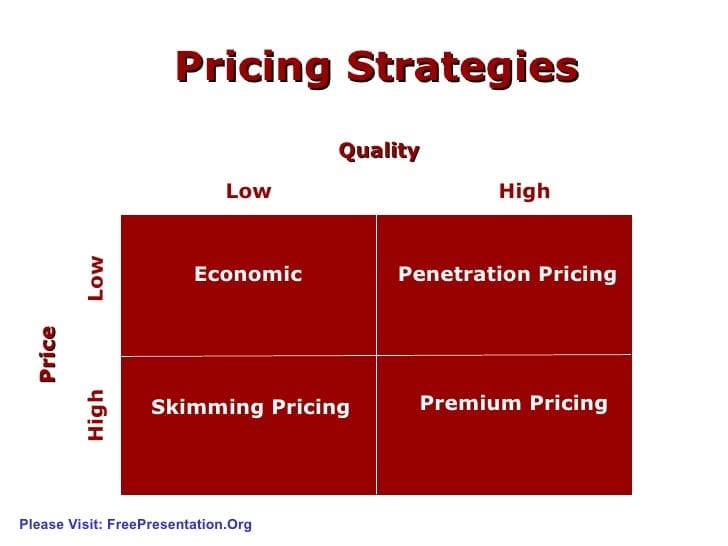
Master Effective Prices Approaches to Maximize Revenue
In the ever-evolving landscape of commerce, understanding efficient pricing strategies is important for services aiming to take full advantage of profit. A nuanced understanding of prices psychology can considerably affect customer actions and acquiring choices.
Comprehending Prices Psychology
Recognizing prices psychology is important for businesses aiming to maximize their rates strategies. This field examines how customers perceive rates and exactly how these assumptions affect their investing in choices. Key principles in rates psychology consist of the anchoring impact, where the initial price presented works as a recommendation factor for customers, and the idea of rate sensitivity, which differs amongst different consumer segments.
Furthermore, businesses can leverage the concept of regarded worth, where the viewed benefits of a product and services can validate a higher price point. Premium prices can develop a mood of exclusivity, drawing in customers that connect higher costs with superior high quality. On the various other hand, emotional rates, such as establishing a price at $9.99 rather than $10, can significantly affect consumer actions by making rates appear much more eye-catching.
Moreover, shortage and urgency can boost the regarded worth of items, triggering quicker buying decisions. Understanding these mental triggers makes it possible for businesses to formulate pricing approaches that not just drive sales however likewise foster client commitment. Thus, mastering pricing psychology is important for reliable prices technique formula, bring about boosted profitability and market positioning.
Implementing Value-Based Rates

Next off, segment your consumers based on their desire to pay and the worth they regard. By doing so, you can customize offerings and rates approaches to straighten with various sections.
After collecting insights, set rates that show the optimum amount a client wants to pay, making certain that they regard a fair exchange for the value obtained. Communicate the worth proposition properly, highlighting the benefits and differentiators of your offering. Continually keep track of market conditions and client feedback to improve your pricing strategy over time. By carrying out value-based rates, businesses can improve profitability while fostering long-lasting consumer loyalty.
Exploring Dynamic Rates Versions
In today's quickly changing market landscape, dynamic prices designs have actually become a powerful approach for businesses looking for to maximize income and reply to changes in demand. These designs permit business to readjust their rates in real-time based on numerous factors such as customer behavior, market patterns, and supply levels. By leveraging data analytics and formulas, businesses can recognize optimum rates factors that take full advantage of sales while staying competitive.
Dynamic prices can take various kinds, including time-based prices, where costs vary based on time of you can look here day or season, and demand-based pricing, which changes costs according to present consumer need. This versatility not only enhances earnings however likewise improves customer satisfaction by offering prices that mirror real-time market problems.
Applying vibrant prices requires a robust technological infrastructure and a deep understanding of consumer sections. It is critical for organizations to keep track of market signals and consumer responses continually, making sure that pricing techniques straighten with broader organization objectives. Clear communication concerning prices adjustments can help minimize customer discontentment and foster count on, inevitably leading to sustained earnings in an affordable industry. Accepting vibrant pricing can hence be a transformative approach in the mission for maximizing profits.
Studying Rival Rates
Keeping an eye on rival rates is vital for organizations aiming to keep an one-upmanship in their respective markets. By examining rivals' pricing methods, business can identify market patterns, comprehend customer preferences, and change their pricing as necessary. This analysis includes celebration information on rivals' web link costs, marketing approaches, and item offerings to inform prices choices.
To successfully examine competitor pricing, companies ought to utilize numerous devices and methods, such as cost monitoring software, marketing research reports, and customer comments. This information can disclose just how rivals position their products and services, enabling businesses to distinguish their offerings or take on comparable techniques to remain pertinent.
Furthermore, it is essential to classify rivals right into straight and indirect competitors. Direct rivals provide comparable services or products, while indirect rivals may satisfy the same customer requirement with different solutions. Understanding the nuances between these teams will make it possible for companies to tailor their prices methods better.
Ultimately, continuous competitor pricing analysis is important for making enlightened pricing choices. It allows companies to continue to be dexterous in feedback to market shifts, ensuring they can seize chances and reduce dangers connected with pricing approaches.
Reviewing Prices Performance
Understanding exactly how competitor prices affects market characteristics leads to an all-natural emphasis on reviewing prices performance within one's own organization. This analysis is important for determining locations of toughness and opportunities for renovation, ultimately boosting success.

Additionally, performing routine prices audits can disclose discrepancies in between anticipated and actual efficiency. This involves contrasting pricing information throughout different sectors and networks to understand variances and determine fads. Incorporating consumer comments can offer understandings into regarded value versus actual rates, ensuring placement with market assumptions.
Last but not least, leveraging information analytics tools can promote much deeper understandings into rates efficiency, allowing businesses to make data-driven adjustments (Pricing Strategy). By constantly evaluating pricing efficiency, organizations can adapt to market changes and enhance their approaches, ensuring sustained success in a competitive landscape
Conclusion
By leveraging pricing psychology, organizations can improve perceived worth and dressmaker pricing to diverse customer sectors. The adoption of dynamic and value-based rates designs promotes real-time modifications based on need and consumer determination to pay.
Understanding rates psychology is critical for services aiming to enhance their pricing strategies. Understanding these mental triggers enables services to develop pricing approaches that not just drive sales but additionally foster customer commitment. Therefore, mastering prices psychology is essential for effective prices strategy solution, leading to boosted success and market positioning.
By examining competitors' rates techniques, business can determine market fads, recognize consumer preferences, and change their rates appropriately. By leveraging rates psychology, organizations can enhance regarded value and dressmaker prices to diverse customer sections.